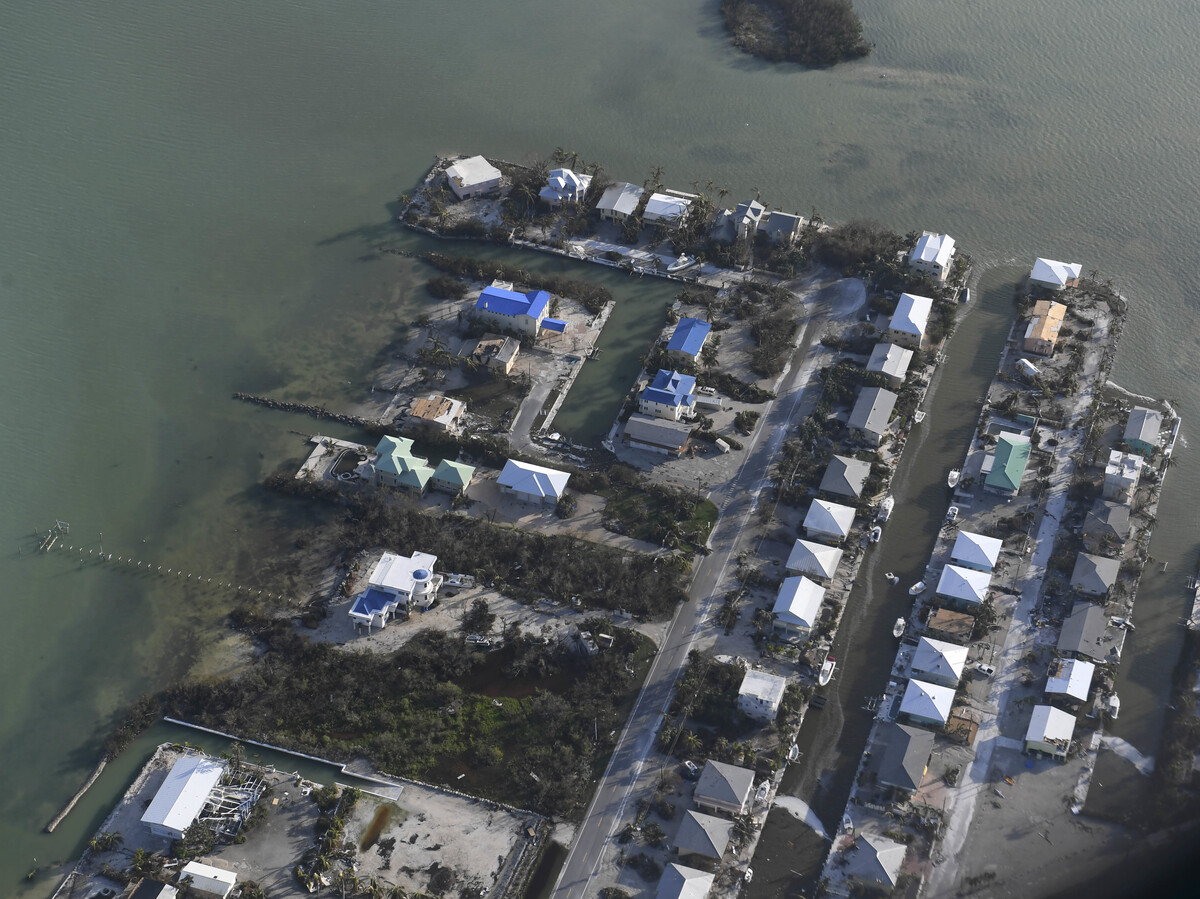Buildings Are In Very hot Spots For Climate-Fueled Disasters : NPR

Hurricane Irma destroyed properties in the Florida Keys in 2017. A new study finds structures in the contiguous U.S. are concentrated in disaster-prone parts.
Matt McClain/AP
hide caption
toggle caption
Matt McClain/AP

Hurricane Irma destroyed residences in the Florida Keys in 2017. A new study finds buildings in the contiguous U.S. are concentrated in catastrophe-prone parts.
Matt McClain/AP
Much more than 50 percent of the properties in the contiguous U.S. are in disaster hotspots, a new study finds. Tens of thousands and thousands of residences, enterprises and other properties are concentrated in parts with the most threat from hurricanes, floods, wildfires, tornadoes and earthquakes.
The conclusions underscore how growth designs exacerbate injury from climate modify.
“We know that just about every calendar year, we reduce billions of dollars [and] we drop life to normal dangers,” states Virginia Iglesias, a researcher at the University of Colorado, Boulder and one of the authors of the new analyze. “Of study course local weather modify has a whole lot to do with this for the reason that local climate modify is raising the chance of intense gatherings. But at the similar time, it also issues what is in harm’s way.”
Iglesias and her colleagues analyzed records going again to 1945 to see how a lot of properties are in hotspots for organic dangers. They focused on the riskiest areas — areas in which the probability or magnitude of a disaster is in the leading 10%.
They found that these kinds of disaster hotspots account for about 30% of the contiguous U.S., but are home to nearly 60% of properties in the country.
That means advancement is concentrated in the most perilous locations. “We’re placing a lot more buildings and far more individuals in these chance prone regions,” says A.R. Siders, a catastrophe researcher at the College of Delaware who was not involved in the new review. “In the United States, we have a wonderful deal of command about hazard. By our improvement, by means of local land use, by zoning, by way of in which we permit development to come about.”
The study discovered that advancement in wildfire-vulnerable parts has accelerated the most rapidly of any hazard, in particular considering that the 1980s. Most of that setting up is going on in the western U.S. In the japanese U.S., cities keep on to increase advancement in spots that are extremely vulnerable to hurricanes.
About 1.5 million buildings are in hotspots for two or extra hazards. For case in point, areas of the western U.S. that are really prone to the two wildfire and earthquakes, or areas of the southern U.S. that are at high threat for floods, hurricanes and tornadoes.
Most individuals who stay in flood and fireplace inclined components of the U.S. are not conscious of the danger to their houses, in portion due to the fact that danger is not disclosed to dwelling customers or renters.
The examine authors made use of a significant databases of developing records that was compiled by the research arm of the serious estate listing enterprise Zillow. The records go back again additional than a century, and show where and when properties ended up crafted throughout the contiguous U.S. In the very last few a long time, climate researchers have ever more incorporated these types of information into their perform, as it gets to be apparent that extraordinary weather and the built setting are inextricably connected.
Such information can assistance illuminate who is most at chance from local climate-driven disasters. “We know from study carried out by other teams that severe situations and all-natural disasters boost social inequality,” states Iglesias. She says she and her colleagues are doing the job on abide by-up research that analyze who is dwelling in disaster hotspots.
She hopes this sort of investigate can help policymakers and residents make additional knowledgeable conclusions about the place to allow for new improvement, and how to make structures much more resilient.

Siders agrees that this kind of study is an critical device, in particular for area governments that control zoning rules and implement setting up codes. “[Studies like this one] with any luck , give an impetus for community governments to sit up and say ‘We can deal with risk in our possess communities by having proactive methods to not permit new improvement in the most possibility inclined locations,'” Siders suggests.
Ideal now a lot of area authorities are not taking these ways to minimize risk, Siders claims. Regional governments have an incentive to retain inhabitants and tax foundation by letting new growth, even in places that are at substantial threat for disasters. That has led coastal towns to approve waterfront properties even as sea levels rise and floods get much more harmful, a 2020 examine observed.
A identical development is actively playing out in the western U.S., wherever properties continue to be designed in areas that are possible to melt away. About a quarter of Californians reside in substantial-chance wildfire regions, a current report found.







